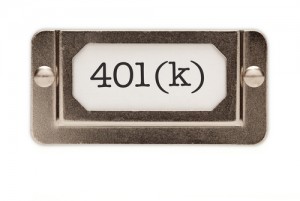You need to be thinking about how to secure your retirement and give your 401k insurance in the form of well read investor.
Everyone wants to retire comfortably right? Well, back in the day the United States had a lot of  companies who, if you worked for them for a certain period of time, would guarantee a fixed payment upon retirement until you die. It’s called a pension plan. Over the years pension plans made way for the 401k. If you have a full time job with any reputable company you probably have a 401k plan right now. Getting your 401k right is a big part of most people’s retirement savings planning because without the backdrop of a pension plan what is in your 401k when you hit retirement is what needs to last you for the rest of your life assuming you have no other assets to pull from.
companies who, if you worked for them for a certain period of time, would guarantee a fixed payment upon retirement until you die. It’s called a pension plan. Over the years pension plans made way for the 401k. If you have a full time job with any reputable company you probably have a 401k plan right now. Getting your 401k right is a big part of most people’s retirement savings planning because without the backdrop of a pension plan what is in your 401k when you hit retirement is what needs to last you for the rest of your life assuming you have no other assets to pull from.
Today we are going to go over some of the finer points of a 401k Rollover.
What is a 401k Rollover?
When you leave one job and go to another you have the option to do a 401k rollover to 401k at your new job. Or you can take the money out as a lump sum and do with it whatever you want, roll it in to traditional IRA or Roth IRA. Or you can leave it with you previous employer.
Lump Sum
Taking a lump sum should only be done in extreme cases where you need that money right now for something extremely important. The reason being is that you lose the tax advantages of a 401k if you take it out as a lump sum. If you take it all out at once you will be subject to Federal and State income taxes that year and you will be liquidating your future. Not only that in most cases if you are under 59 ½ you will also be charged a 10% penalty for early withdrawal. Yikes!!!
Traditional or Roth IRA
You can also roll it over to a traditional IRA or Roth IRA. Why would you want to do this? You may not be excited with what either your old employer or your new employer has to offer in the way of 401k plans so you can take your money and place it in a traditional 401k or IRA and that will give you much more freedom on how your funds are invested as you will directly be responsible for the growth of your money. If you do choose to rollover over your funds in to a Roth IRA you will be responsible for the taxable amount due in that year. Obviously the advantage of a Roth IRA is that once you’ve paid those taxes your money will now grow not tax deferred but rather tax free. So when you take out your money at retirement you won’t pay taxes because you already did years ago when you did your rollover in to your Roth IRA.
Leave it at your old employer
In most cases you can leave your 401k with your previous employers plan. Why would you want to do this? Well, a couple of considerations are maybe they have better plan options then your new employer or maybe the fees are less. Check with your plan administrators to find out.
401k rollover at retirement
Ok, so you’ve got a bunch of money in your 401k and you’re ready to retire. What next? How do you want to access your money? One thing to note is that when you can take out your money you will be taxed regular income taxes based on the amount you take out that particular year. Something you might want to consider is to annuitize your money. There are many retirement account companies, typically insurance companies that will take your lump sum and pay you out a certain amount per month until you die and sometimes even to your heirs for a period of time. This is about as close to the old school pension plan as you can get. Typically your monthly payment will be based on your health, life expectancy and the bulk amount you are giving them.
In conclusion a 401k is a very important aspect of how most people will spend their retirement years so the choices you make with it are not to be taken lightly. It may seem like something that you can just put on auto-pilot and let it ride but a little care during the growth years of your 401k can dramatically impact your retirement lifestyle.
To your everlasting wealth!
 Follow
Follow